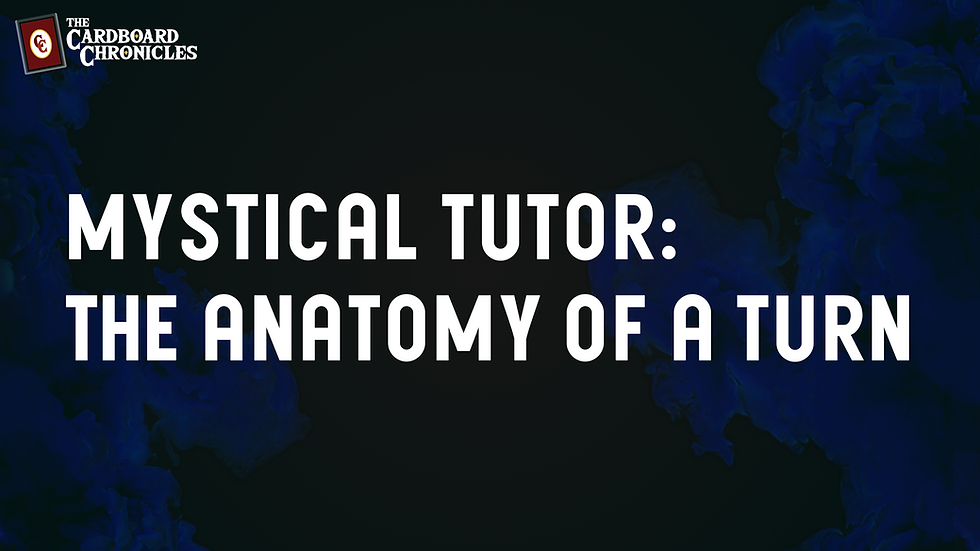Mystical Tutor: Who has Priority? | Learn Magic: The Gathering
- Greg Montique

- Apr 21
- 3 min read
When you start to learn Magic: The Gathering, one of the most important and often misunderstood—rules is priority. If you’ve ever been unsure when you’re allowed to cast a spell, activate an ability, or respond to something your opponent is doing, join the club. Understanding priority will clear things up and level up your gameplay.
What Is Priority in Magic: The Gathering?
In simple terms, priority is the permission the game gives to a player to take actions, like casting a spell, activating an ability, or passing to the next phase. Only the player who has priority can act. If you don’t have priority, you can’t do anything… yet.

Players take turns getting priority, and it passes back and forth at specific points in the game.
When Do Players Get Priority?
Here’s the basic flow:
The active player (if it's your turn, this is you) gets priority first during most steps and phases.
After that player takes an action or passes, the next player gets priority.
The game only moves to the next step or phase when both players pass priority in succession while the stack is empty.
This is why, for example, if you cast a spell and your opponent wants to counter it—they need to wait until you pass priority. If they don’t respond and you both pass, the spell resolves.
The Stack and Priority
Priority is tied closely to the stack, Magic’s system for handling spells and abilities. When a player casts a spell or activates an ability, it goes on the stack. Then both players get a chance to respond.
Here’s how it works:
You cast a spell (e.g., Lightning Bolt).
That spell goes on the stack.
You (as the active player) get priority again.
You can choose to respond with something else, or pass.
Your opponent then gets priority—they can respond with Counterspell, for example.
Responses also go on the stack, with the last one added resolving first.
Nothing on the stack resolves until both players pass priority without adding anything new.
Priority in Common Situations
During Combat: After attackers are declared, both players get priority. This is when players can cast Giant Growth, Settle the Wreckage, etc.
End Step Effects: If a card says “at the beginning of the end step,” that goes on the stack, and players get priority to respond before the game moves on.
Trigger Stacking: If multiple triggers happen at once, the active player puts theirs on the stack in the order they choose, then opponents put theirs on top.
Tricks and Tips
Don’t rush! Even if it’s your opponent’s turn, you still get priority regularly. If you want to act before they move to the next phase, you have that chance.
Hold up mana wisely. If you leave mana open, you're signaling you may use it during your priority window. If you play blue, this is a great way to give everyone else anxiety.
Know your windows. If you want to do something before combat damage, do it after attackers are declared—don’t wait too long!
Learn Magic: The Gathering | Priority is Easy!
Priority is the backbone of Magic’s timing rules—it determines who acts when, and in what order spells resolve. Once you internalize how it works, you’ll gain tighter control over your plays, your responses, and your ability to interact with your opponent at the right time.
So next time you’re thinking about your next move, remember: it's all about who has priority—and when they pass it.










Comments